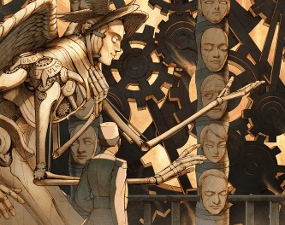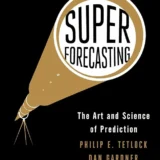
Somewhere over five years ago, I wrote a column on England’s “Fabulous, Feminine Answer to James Bond,” namely the comic-strip heroine, Modesty Blaise. In that column (linked above), I gave short shrift to the comic strip version of our heroine, concentrating mainly on the written and filmic versions. I had actually come to the party late; back in 1965 or so I found the hardcover book (actually a book-club edition, I believe, though I don’t have that particular edition anymore) and was instantly enchanted by this particular character and her best friend and partner, Willie Garvin. In 1966, I saw that a movie had been made, and was really prepared to like it, but in my opinion (since confirmed by buying a copy on DVD) it was a disaster that made a mockery of what was by then a beloved book. But I was a bit of a snob, and waited for each book to be released. (Ha! I bet you thought this column was going to be about a naked heroine! Well, you’re sort of right….)
If you want to know more about Modesty (and to save me having to repeat everything I said in the above-mentioned column) you can click on that link; in it, I talk about how Peter O’Donnell, who had collaborated with Jim Holdaway on another strip, originated Modesty. Until I moved to Canada in 1985, I was only vaguely aware that my favourite female character (okay, there have been a few others, like James H. Schmitz’s Telzey Amberdon, but let’s hold that discussion for another day) was also in a comic strip (or “bande dessinée,” as the Francophones would have it). I had seen the original Modesty Blaise movie and, as I said before, considered it a travesty. Also in the ‘80s, I saw the pilot for what would have been a pretty bad TV show based on her and Willie. So all in all, I regarded her as a “book” character.

But some time earlier this year I ran out of movies to watch that weren’t repetitious slashers, unfunny comedies, derivative unromantic rom-coms and the like, so went to delve into my stash of unread books—the ones I read for pleasure, not for “work”—and discovered a stack of derivative, unromantic, repetitious apocalyptic unscientific “sci-fi” books (because the good books by “name” authors tend to get read first)… so I decided to try a Blaise comic strip.
Guess what? Except for being shorter—if you consider each panel to be the equivalent of a page of text; and in most books there are 3 panels to the strip, and roughly 100 strips per book, that makes each strip book the equivalent of 300 written pages—so not that much shorter! And every strip was written by O’Donnell himself. And there are roughly 100 books, of which I’ve only read about half. Not a bad way to console oneself, I’d say. The strips themselves are numbered from 1 to 10183, I believe.
Here’s a list of the strip collections I know of:
01 – La Machine
02 – The Long Lever
03 – The Gabriel Set-Up
04 – Mister Sun
05 – The Mind of Mrs. Drake (1964)
06 – Uncle Happy
07 – Top Traitor
08 – The Vikings
8a – In the Beginning (1966)
09 – The Head Girls
10 – The Black Pearl
11 – The Magnified Man (1967)
13 – Bad Suki
14 – The Galley Slaves
4a – The Killing Ground
15 – The Red Gryphon
16 – The Hell Makers
17 – Take-Over
18 – The War Lords of Phoenix
19 – Willie the Djinn (1970)
20 – The Green-Eyed Monster (1970)
21 – Death of a Jester
22 – The Stone Age Caper (1971)
23 – The Puppet Master (1971)
24 – With Love From Rufus
25 – The Bluebeard Affair (1972)
26 – The Gallows Bird
27 – The Wicked Gnomes
28 – The Iron God
29 – Take Me To Your Leader
30 – Highland Witch (1974)
31 – Cry Wolf
32 – The Reluctant Chaperon
33 – The Greenwood Maid (1975)
34 – Those About to Die
35 – The Inca Trail
36 – The Vanishing Dollybirds
37 – The Junk-Men
38 – Death Trap
39 – Idaho George
40 – The Golden Frog
41 – Yellowstone Booty
42 – Green Cobra (1979)
43 – Eve And Adam
44 – Brethren of Blaise
45 – Dossier on Pluto
46 – The Lady Killers
47 – Garvin’s Travels
48 – The Scarlet Maiden
49 – The Moon Man
50 – A Few Flowers for the Colonel (1982)
51 – The Balloonatic (1982)
52 – Death in Slow Motion
53 – The Alternative Man
54 – Sweet Caroline
55 – The Return of the Mammoth (1984)
56 – Plato’s Republic
57 – The Sword of the Bruce
58 – The Wild Boar
59 – Kali’s Diciples
60 – The Double Agent
61 – Butch Cassidy Rides Again
62 – The Million Dollar Game
63 – The Vampire of Malvescu
64 – Samantha and the Cherub
65 – Milord
66 – Live Bait
67 – The Girl from the Future
68 – The Big Mole
69 – Lady in the Dark
70 – Fiona
71 – Walkabout
72 – The Girl in the Iron Mask
73 – The Young Mistress
74 – Ivory Dancer
75 – Our Friend Maude
76 – A Present for the Princess
77 – Black Queen’s Pawn
78 – The Grim Joker
79 – Guido the Jinx
80 – The Killing Distance
81 – The Aristo
82 – Ripper Jax
83 – Maori Contract (1995)
84 – Honeygun
85 – Durango
86 – The Murder Frame (1997)
87 – Fraser’s Story
88 – Tribute of the Pharaoh (1998)
89 – The Special Orders
90 – The Hanging Judge
91 – Children of Lucifer
92 – Death Symbol
93 – The Last Aristocrat (2000)
94 – The Killing Game
95 – The Zombie
96 – The Dark Angels
This list is off the internet; I still have to find some of these to read myself.
Although O’Donnell killed Blaise and Garvin off in one of the stories in Cobra Trap (1996), he continued writing the strip until about 2000. As I mentioned in the earlier column, some fans refuse to read Cobra Trap as a way of keeping the pair alive. I can certainly empathize.

Because it was a British strip, it could sometimes run afoul of the authorities either in its own country, or in others… some strips being thought too racy to show. For example in The Junk Men (4142-4241A), Figure 3 shows the original strip 4167, which shows Modesty and Willie sharing a Turkish bathroom. Readers know that there is nothing sexual between Modesty and Willie; they also know that both have been nude in front of each other many times. They are closer in many ways than husband and wife. However, showing unmarried male/female nudity—or even hinting at it—was taboo in some places. Figure 4 shows the strip as it was censored.

In fact, sometime around 1970 when Holdaway or his follower Romero showed Modesty’s breasts in a strip there was a big foofaraw in the British press, even though nudity (or at least semi-nudity) was always hinted at in the stories. Regular readers would know that Modesty had a technique for immobilizing a roomfull of hostile men that she called “The Nailer,” which was guaranteed to stop them in their tracks for about five seconds, seconds in which she or Willie could get the drop on them: she simply took off her top and the sight of her bare breasts would confound them. (I guess there weren’t any gay bad men in comics back then, although some female villains were hinted at as being gay.) Then, one time in the late ’70s, the Nailer only stopped some hostile bad guys for three seconds; Modesty blamed it on the easy availability of porn in TV and movies.
One thing struck me while reading these strips: there’s not as much crossover as I might have expected. For example, Uncle Happy (#613-741) is very much a precursor of the book The Silver Mistress. In Lucifer’s Children (9645-9749A), we see the “miracle” doctor Giles Pennyfeather (who despite himself is a whiz at curing people just by being around) and the American billionaire John Dall, both of whom appeared in one or more written (as opposed to comic) books. Likewise, Gabriel, a villain, appears both in a strip and a book—possibly two; I haven’t re-read all of them recently. Of course all the main characters—Modesty and Willie, Weng the “houseboy,” Sir Gerald Tarrant and his sidekick Jack Fraser, and Willie’s sometime lover the Scottish Lady Janet Gillam, appear in both book and strip.
And now I’m going to commit some kind of heresy: to be truthful, I’ve never cared for the drawings of either Holdaway or Romero. I’m not against stylistic drawing, but for something like Modesty, I’d prefer someone like Gil Kane, or even Frank Hampson (creator of Dan Dare), who was rejected by O’Donnell himself. I mean, if you want stylistic drawings, how about Wally Wood, or Jack Kirby, so you can actually see what’s going on? But hey, that’s my particular hobby-horse.
I enjoy reading comments on my column, either here, or on my Facebook page. All your comments are welcome, even if you don’t agree with me! (And if you find a factual error, don’t be shy—let me know about it!) My opinion is, as always, my own, and doesn’t necessarily reflect the views of Amazing Stories or its owners, editors, publishers or other columnists. See you next week!
Steve has been an active fan since the 1970s, when he founded the Palouse Empire Science Fiction Association and the more-or-less late MosCon in Pullman, WA and Moscow, ID, though he started reading SF/F in the early-to-mid 1950s, when he was just a sprat. He moved to Canada in 1985 and quickly became involved with Canadian cons, including ConText (’89 and ’81) and VCON. He’s published a couple of books and a number of short stories, and has collaborated with his two-time Aurora-winning wife Lynne Taylor Fahnestalk on a number of art projects. As of this writing he’s the proofreader for R. Graeme Cameron’s Polar Borealis and Polar Starlight publications. He’s been writing for Amazing Stories off and on since the early 1980s. His column can be found on Amazing Stories most Fridays.










Interesting – if rather brief – summary of the MB comics. I have to disagree on Holdaway, who was the original and best artist – MB was as much his creation as Peter O’Donnell’s. Frank Hampson actually was in the front running to illustrate the early MBs, but – great artist as he was – he was totally unsuited for MB. His early illustrations lacked the dynamics Jim Holdaway gave them, and his MB looked like a 1950s fashion hobbyhorse, not exotic at all! O’Donnell wasn’t impressed. But I agree with you about Romero. I have written a two part length essay on ALL the comic strip strips, with my critique, on story plots and the artwork. If you’re interested contact me at GAAG19@Outlook.com.
After Holdaway I came to appreciate Colvin, then Burns. Kirby would have been interesting. I also thought Martin Asbury (who was drawing the UK newspaper “Garth” strip.
Romero lost it for me, apart from nudes and MB face, he got progressively worse with backgrounds, faces in general, and was hopeless depicting the stories set in the UK.
Hi, Garth–nice to meet a fellow O’Donnell enthusiast, and thanks for the comments. I don’t know if you wanted your email published, but I’ve left it in in case other enthusiasts want to contact you.
I’ve always been more a fan of the books than the strips, but I acknowledge that the strips came first; and since there are no more books–and I’ve reread them all several times–I’ve taken to rereading the strips, and enjoying them.